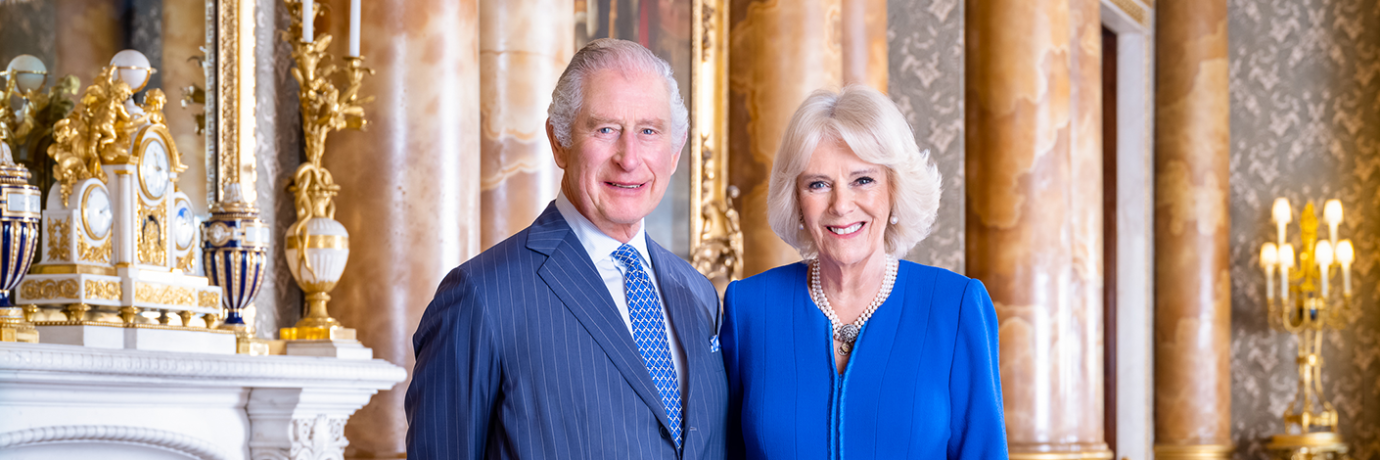BFRS celebrate the Coronation of His Majesty King Charles III, with a look back over his Military Career.
King Charles III is the military's Commander-in-Chief. He has always maintained a close relationship with the Armed Forces and served in both the Royal Navy and Royal Air Force. On 8 March 1971, the King – then known as Prince Charles – flew himself to RAF Cranwell in Lincolnshire to train as a jet pilot.
He had been given flying instruction from the Royal Air Force during his second year at Cambridge University.

Later that year, after passing out at RAF Cranwell, he embarked on a career in the Royal Navy, following in the footsteps of his father, grandfather and both great-grandfathers.
Following his six-week course at Britannia Royal Naval College Dartmouth, he spent time serving on the guided missile destroyer HMS Norfolk and two frigates – HMS Minerva and HMS Jupiter.
1974 saw the future King qualify as a helicopter pilot and he flew Wessex helicopters with 845 Naval Air Squadron from the commando aircraft carrier HMS Hermes.
/MOD/2023/April/APOLOND-OFFICIAL-20230427-040-075.jpg.iCf6ypvTMWATAA.63RF3os92G.jpg)
In February 1976, the then-Prince of Wales took command of coastal minehunter HMS Bronington, before ending his Royal Navy service nine months later.
Despite leaving the military, the King has continued to work closely with the Armed Forces and in 2012, Queen Elizabeth II awarded him the highest rank in all three services – Field Marshal, Admiral of the Fleet and Marshal of the Royal Air Force.
He has been the Commander-in-Chief of the UK Armed Forces since the passing of his mother, Queen Elizabeth II, in September 2022.
A month later, the King replaced the Duke of Sussex as Captain General of the Royal Marines - The ceremonial head of the corps.
Stunning images of the Royal Navy contingent Coronation rehearsals.
In readiness for the coronations our armed forces including the Royal Navy contingent of the Coronation procession have performed overnight rehearsals. Beneath the glow of London’s street lamps, 4,000 sailors, soldiers and aviators paraded through the empty streets of the Capital as they mounted their final full-scale rehearsal of the Coronation processions ahead of 6 May.
/MOD/2023/May/RNVPU-20230502-XB0010-012.jpg.iCf_3ZzTMUsTF6djYBMA.Ly30fY6onX.jpg)
Personnel from all Regiments of the British Army, and from across the Royal Navy and Royal Air Force, formed up into the eight processional groups that will lead Their Majesties The King and Queen Consort back to Buckingham Palace after the Coronation service at Westminster Abbey. The Sovereign’s Escort of the Household Cavalry Mounted Regiment had the furthest to parade, as they will lead the ceremonial charge for both The King’s Procession to Westminster Abbey, and the return procession from the Abbey
/MOD/2023/April/APOLOND-OFFICIAL-20230427-040-072.jpg.iCfM8JzTMWATAA.IMb-hCoj1B.jpg)
His Majesty, King Charles III has presented new standards and colours to the Royal Navy, the Household Cavalry Mounted Regiment and Grenadier Guards from the British Army, and the Royal Air Force in Buckingham Palace.
The four emblems have been specially produced for His Majesty’s Coronation owing to their special relevance to the Sovereign. The Royal Navy; The Life Guards of the Household Cavalry Mounted Regiment; the King’s Company of the 1st Battalion Grenadier Guards; and the Royal Air Force’s (RAF) King’s Colour Squadron paraded into Buckingham Palace where their Colours were consecrated by an Armed Forces chaplain and presented by The King.
British Forces Resettlement Services wish to congratulate His Majesty King Charles III on his Coronation and long may he reign!
Images copyright - UK Royal © Crown copyright 2023 UK MOD © Crown copyright 2023